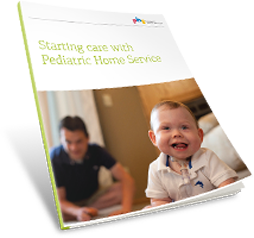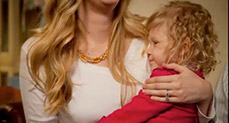Benchmarking Pediatric Home Care To Improve Clinical Quality

Roy C. Maynard, M.D., is the Medical Director for PHS. He serves as PHS’s clinical leader, working with the team to provide consultation and advice to ensure quality and effective pediatric home care to patients and their families in their own homes. He also leads implementation of clinical policies, procedures and programs to further enhance the best possible care for each child. He is a Neonatologist and Pediatric Pulmonologist, and served as a staff physician at Children’s Hospitals and Clinics in Minneapolis, Minn.
If health care costs continue to grow at historical rates, the share of gross domestic product devoted to health care in the United States is projected to reach 34% by 20401. The costs associated with hospitalization consumes approximately 1/3 of the dollars spent on healthcare, and outstrips the costs for other healthcare services to take the number one spot. The prudent and timely use of home care services has the potential to decrease hospital days by allowing early discharge and preventing expensive hospital readmissions. This latter concept was recently supported by a publication2 looking at 2 different populations of children with medical complexity (CMC).
Medically complex children discharged to home with nursing care had decreased hospital readmissions within 30 days, less hospitalizations and hospital days within 12 months of discharge, and reduced hospital costs compared to CMC discharged without home care nursing.
Intravenous Milrinone Therapy at Home
Benchmarking home care is essential to document that improvement in both quality of care and the individual experience can be done with less healthcare expenditures. This past month we published the PHS experience with continuous intravenous milrinone therapy in pediatric outpatients3.
Our experience with this therapy for children with heart failure validates that the administration of this drug can be done safely at home and with a substantial cost savings relative to hospitalization.
Analysis of A Central Line Study
PHS also recently completed a study looking at the frequency, treatment, and outcomes of complications associated with central venous lines in pediatric outpatients. Approximately 250 central lines in children managed at home were followed over a 2-year timeframe. These central lines are used for the administration of therapies including enzyme replacement, total parenteral nutrition, antibiotics, gamma globulin, and hydration.
We are in the process of doing the statistical analysis of our results for publication.
Publishing Unstudied Data
This past March, PHS embarked on another clinical study to look at the use of nasogastric (NG) feeding tubes in pediatric outpatients. Very little information has been published in the medical literature on this subject. This PHS observational study is designed to look at the prevalence of this therapy in our community, the types of patients selected for this intervention, and the safety and outcome of children using NG tubes in the home. The PHS clinical staff involved in these studies is dedicated to pediatric excellence in taking care of the child.
-
The Economic Case for Health Care Reform, Executive Office of the President, Council of Economic Advisers. June 2009.
-
Gay JC, Thurm CW, Hall M, et al. Home Health Nursing Care and Hospital Use for Medically Complex Children. Pediatrics. Nov 2016, Vol 138/Issue 5.
-
Curley M, Liebers J, Maynard R. Continuous Intravenous Milrinone Therapy in Pediatric Outpatients. Journal of Infusion Nursing. March/April 2017, Vol 40:(2)
Originally published: April 14, 2017


